 Another Stereotype of the Month entry:
Another Stereotype of the Month entry: Another Stereotype of the Month entry:
Another Stereotype of the Month entry:
First read
then return here for my analysis, which I sent to the site's Webmaster.
Hopi = Hindu?
That some Hindu people migrated to the US and brought Kokopelli with them is an interesting theory, but I think author Matlock has overstated the similarities between the Hopi and the Khopis of Uzbekistan and Afghanistan. I've read several versions of the Hopi creation stories and I think Matlock has some of the details wrong. It would be useful to know his source for his Hopi claims.
Some problems with the alleged connections:
Rob Schmidt
Publisher
PEACE PARTY
A discussion with author Gene Matlock
>> There are several versions of the Hopi emergence story. Although I drew from more than one, I based most of what I wrote on Edmund Nequatewa's Truth of a Hopi. <<
I've read Truth of a Hopi. In fact, I thumbed through it before writing you. I didn't find the details I asked you about. Can you tell me what chapters or pages they appear on?
I did a Google search for "Yaponche" and got only 10 hits. The only two relevant ones were your mentions of Yaponche. That's out of some millions of pages Google indexes. So wherever you got Yaponche from, he's so obscure he doesn't deserve mention. He's irrelevant to any significant theory about Hopi religion.
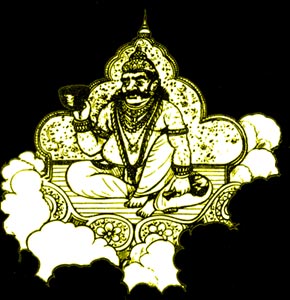
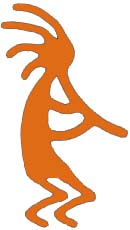
>> I take the position that all non-Africanoids, and that means all, originally lived in a swath of land that started in Eastern Siberia and extended down to what are now the old Sivapuri, or Northern India, being sure to include Uzbekistan, Afghanistan, Pakistan, Kashmir, Rajasthan, Western Tibet, etc. <<
>> I also take the position that all men at one time spoke one language. <<
>> Last of all, I use as my main source of information, and that is always, the Hindu Holy Books <<
You're making a large number of assumptions here, any one of which might require a lifetime of analysis to justify. I don't accept any of them as given.
>> About Kokopelli not always having a hump, etc. That's also true about Kubera. <<
I didn't see any particular similarities between the picture of Kubera you sent and Kokopelli. The differences seem more pronounced: Kubera, squat and fat; Kokopelli, thin and wiry. A stick figure in most depictions.
>> Robert, after writing down what I have learned from the myth, I then refuse to debate or even argue about it <<
Well, that certainly saves a lot of time. <g>
>> That sometimes gets skeptics teed off at me, but then, I'm not a skeptic. <<
It also gives skeptics like me more reasons to dismiss your theories. As a non-scholar, I've already poked some holes in them. If you can't or won't defend your theories, that's the end of the story.
>> I'm gullible, I admit. <<
I believe you!
Truth of a Hopi = one man's views
>> I guess I'm like Edmund Nequatewa. He found a great story in one of the myths and wrote it down. <<
Are you like him? I'd say it's significant he titled his book Truth of a Hopi, not Truth of THE Hopi. He recognized his version of the Hopi myths was only one version.
Other versions agree much less with your interpretation, yet you don't deal with them. Why not? You say myths come from real men who did real things, so what's the link between these other myths and real Hindu history? If the Hopi truly came from Hindu roots, most versions of their myths should have Hindu origins, not just one of them.
If you have a culture with ten or 20 variations of its origin myth, it doesn't seem odd that one of them will match the origin myth of some other culture. As many have said, most origin myths have common features. That's not surprising since people tend to ask the same fundamental questions and come up with the same answers.
>> I was surprised you didn't know about Yaponche, Yaponcha, or Yapontsa, etc., as they call him. I don't know whether he was a major or minor god. I know only that he was the "wind god." <<
Yaponche is one of the details I didn't find in Truth of a Hopi. Or in any other Hopi reference I have. If you could enlighten me where you got him from, specifically....
Side note: I checked my Hopi books with indexes and found one mention of Yayaponcha, in Harold Courlander's The Fourth World of the Hopi. Courlander defines Yayaponcha as "a secret society, now generally considered to be extinct," and says it's sometimes abbreviated to Yaya.
Correspondent Chad Burkhardt explains this discrepancy and shows, once again, that Matlock is off the mark:
The Ya'ya tu—or Ya ya Wimkiya—that you refer to from Courlander is a medicine society that has in the past been associated with witchcraft. Courlander made a mistake using the term Yayaponcha.
The Yayaponcha are wind gods or deities. They live in holes and caves and are mean-spirited, causing wind and sand storms. Nakwakwosis (prayer feathers) are often made for them before outside ceremonies so that the wind will not blow too hard and the people can enjoy the dance/ceremony.
I do not believe the wind deity Yayaponcha plays a role in any reputable account of the Hopi origin myth.
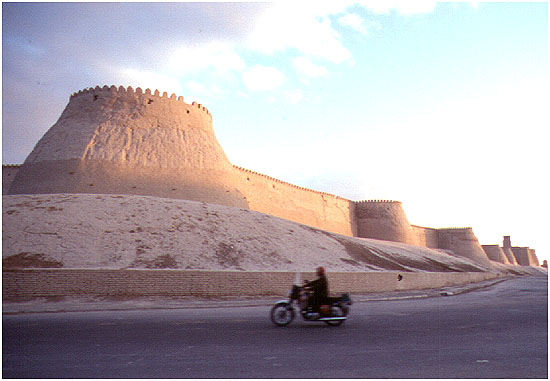
Desert buildings look similar
>> Even today, one finds a certain "Southwesternness" in their buildings. Perhaps you'll be interested in the attachment, which is a picture of the city walls of Khiva. <<
It doesn't look more "Southwestern" than any other desert construction to me. This fortress has no analog I can think of among American Indians. It reminds me much more of an English castle or the Great Wall of China than anything Native.
My working hypothesis is that all desert dwellings resemble each other because of the paucity of materials and harsh environment. It's the architectural equivalent of biology's convergent evolution. When faced with similar problems, people tend to come up with similar solutions.
>> Last of all, I take the position that the Hopis have not been here for too long, for their emergence myth describes with one hundred percent accuracy the social and political conditions existing in India between 1000 and 1200 A.D. when the Virasaiva cult of Hinduism rebelled against Brahminism. <<
Although most scholars are now prepared to admit that man has probably occupied the region of the Hopi towns for at least 10,000 years, the first identifiable remains date from the early centuries of the Christian era (Euler and Dobyns 1971:1-8). Sites representing the late Basketmaker and early Pueblo phases of the prehistoric culture are to be found throughout the Hopi country....That the villages of 1,500 and 1,600 years ago were occupied by direct ancestors of the modern Hopis is a matter for discussion, but the cultural remains present a clear, uninterrupted, logical development culminating in the life, general technology, architecture, and agricultural and ceremonial practices to be seen on the three Hopi mesas today (Brew 1941).
Handbook of North American Indians: Vol. 9, Southwest
That the history of the Southwest Indians runs through the Mogollon, Hohokam, and Anasazi cultures has been well-established. The late Basketmaker phase of the Anasazi (Basketmaker III) occurred in AD 400-700. Kivas with sipapus have been traced to this period and linked to community houses in the earlier Basketmaker II culture.
>> Robert, I will change my mind if you will come up with some really solid proofs, naming real places, giving cultural similarities, as I did with Khiva, Muski, Sivapuni, Yaponche, and the like. <<
Since the languages of these prehistoric people are unknown, it's hard to come up with any linguistic proofs. But I'd say the burden of proof is on you. It's not enough to show similarities between Hopi and Hindu cultures, which could happen by chance. You also need to show how the 1,500-1,600 years of continuity established by archaeologists is flawed—where it falls apart.
Until then, reasonable people will remain skeptical. And rightly so, I'd say.
The debate continues (8/22/02)....
>> Robert, I want to emphasize that I have a lot more to go on than just linguistics. <<
And I want to emphasize that based on your website, you have nothing.
>> The Hindus also have Katsinas, represented by male actors, just as the Hopis do, and by nearly the same names. <<
I hope the names are closer than your previous attempts to identify similar names. As for the male actors, males are the primary actors in most indigenous ceremonies, so that tells us nothing.
>> We must also bear in mind that our Amerindian thinkers are getting increasingly impatient with the idea that they are not connected to the rest of the world. This is a racist insult to them -- and they know it. <<
I've never heard anyone make that complaint...or state, as a corollary, that the Hopi are connected to Hindus. Quote someone saying such a thing, if you can.
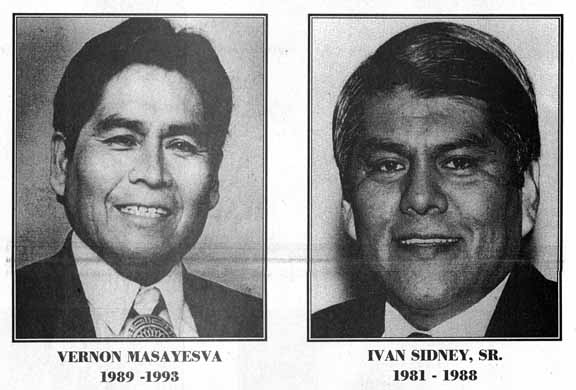
>> I also want to tell you that already a gentleman with whom I correspond is writing a new, rational history of the Hopis, discussing in detail their departure from Khiva in the region that was then called Sivapuri. <<
I hope his evidence is way better than yours is, because yours is wholly unpersuasive.
>> I've got so many proofs that I wouldn't know where to start. So if I don't send you all you would require, that doesn't mean that I lack more evidence. <<
Hm-mm, sure. And you put your worst evidence on your website, not your best? R-i-i-ght.
>> Believe me, the antidiffusionists will soon be very redfaced. <<
When? It's been eight months and I haven't heard a peep out of anyone except you.
>> The Amerindians don't like the antidiffusionist idea either, as I've already told you. <<
If your website is typical of the antidiffusionist position, it's no wonder they don't like it. Your arguments are unpersuasive and stereotypical to boot.
>> Many of their emergence legends mention actual names and places. Even the Nahuatl word for coyote comes from Sanskrit: Kuha-Yate (Wandering Trickster) <<
Sounds like another coincidence. What's the Hopi word for "coyote"? Why isn't it the same, since your primary argument is that the Hopi are Hindus?
It couldn't be clearer that you're finding vague similarities in words, then stretching your theories to fit the "evidence." As I've said, this approach is anti-scientific and wholly unpersuasive.
Hopi katsinas = Hindu actors?
>> Robert, this is a description of the Hindu Katsinas, which I took from a website. Notice even the similarity of the name: Ya-ksha-gaa-na. The root name is Ksha or Kashi. Ksha (appearance)-na (deity). In short, Ksha-na = "appearance of a deity." Although the full title of this type of actor is Ya-ksha-gaa-na, the spectators and the actors themselves just shorten the term to ksha-na. <<
The root of "katsina" is "katsi," which mean life—not appearance. The suffix "-na" means "cause." So a katsina is a being who causes life, not one who looks like a deity.
Neither part of the root words matches in meaning. The whole words aren't that similar. The full title of the Hindu actor is Ya-ksha-gaa-na, which has no correspondence in Hopi. Sounds like another coincidence to me.
>> Yakshagana (ya-ksha-gaa-na, roughly translated as Celebration of the Celestials) is a complete theater which includes song, dance and drama and, is extremely popular in Malnad, Uttara and Dakshina Kannada districts of the Karnataka State (topics -- map -- pictures). It is essentially a stage form which entertains and educates the rural folks. <<
Which is different from the idea of the katsina cult.
>> A performance is commenced with a puja to Shri Ganesh, followed by buffoonery by "Kodangis." A loud background music is provided by a chande and a maddale (various types of drums), and a tala (cymbals) handled by a team of three. Seated among them is Bhagavata who is the producer, the director and the master of the ceremonies. <<
I'd say most katsina ceremonies don't have a "producer" and don't have musical instruments. Some ceremonies have clowns. Sounds like the coincidences you'd find when comparing two "performances" from anywhere around the world.
>> There is no gate collection to any performance, and hence it is completely free from any toll (1985). A temple fund or public contributions financially support a troop. <<
Katsinas aren't performers in a "troop." You're doing a good job of proving how dissimilar the Hindus are to the Hopi.
I'm still waiting for the good evidence rather than this paltry "evidence." Don't hold back any longer, please. Give me your best evidence now.
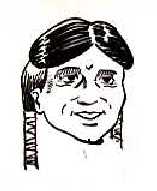
Matlock discusses Spider Woman
>> All I have to do is give Hindus the pre-Hispanic Yaqui name for "Spider Woman," Which is Vairubi, and they don't need any more convincing. <<
Yaquis aren't Hopis. This mixing and matching of cultures is less persuasive to me, not more. If you look through the cultures of the Yaqui, Tohono O'odham, Apache, Navajo, Havasupai, et al., you're bound to find more and more words that resemble those of the Hindus. If you increase the pool of potential words, you increase the pool of coincidental "matches."
>> The "Spider Woman" legends of many Amerindian tribes always give different names of the Multi-Armed Mother Goddesses of the Hindus <<
The Hopi Spider Woman isn't multi-armed, of course. The spider is respected among many Native cultures (e.g., the Lakota Iktomi) for its wisdom, not its limbs. Sitting in its web and waiting for prey is supposedly a sign of cleverness.
>> The Hopi name for "Spider Woman" also screams out its connection with India: Ko'okyangwso So-Wúuti. The Sanskrit translation is, Ka (sun) + Acca (Heavenly) + Jan (Progenitor) + Vaso (Spirit); So (Child-bearing) + Vadhu (Woman). <<
That screams contrivance to me, not connection. First, you can find several transliterations of the Hopi name for Spider Woman (or Spider Grandmother). The one I have in my files is Gogyeng Sowuhti, not Ko'okyangwso So-Wúuti. Using this version, the connection to ka + acca + jan + vaso is nonexistent.
Vadhu and Wuuti are also a non-match, as far as I'm concerned. In addition, Spider Woman isn't a child bearer, since she's generally described as a grandmother. And she doesn't come from the sun, except indirectly. So more of your connections are really non-connections.
>> On page 139, he describes the philosophy of life of the inhabitants of Musika, which fits the Hopis almost like a glove: "...his people were distinguished for their healthy living and longevity- their term of life extending to 130 years. Some of their characteristics....'To eat a common meal which they eat in public...their food consisting of the produce of the chase; to use neither gold nor silver though they have mines of those metals; to employ instead of slaves young men in the flower of their age; to study no science with attention except that of medicine; to have no actions at law but for murder and outrage,' for if contracts are violated one must pay the penalty for reposing too much trust in the other party." <<
As far as I know, the Hopi don't lead exceptionally long lives. Nor do they eat in public. As an agricultural people, they've traditionally subsisted on farming more than hunting ("the chase").
As far as I know, they didn't have gold or silver mines, so they didn't employ young men as miners. As far as I know, they didn't have a prohibition on "science except for medicine." As far as I know, they didn't have a body of rules one could call laws, or a formal system of contracts.
Other than these umpteen cavaets, the description bears a faint resemblance to the Hopi, just as it does to most of the world's indigenous people. It fits the Hopi about as well as OJ Simpson's alleged glove fit him. The result is the same also: "If it doesn't fit, you must acquit."
Amerindians couldn't pronounce "L"?
>> Actually, Kubera is linguistically almost the same as Kopelli. So many Amerindians could not pronounce "L." <<
It's KoKOpelli, not Kopelli. I've never heard that Amerindians couldn't pronounce an "l" sound. And with an "l" or an "r," Kubera still isn't that close.
Your claim about the "l" sound is one "l" of a claim. A few minutes of brainstorming produces the following list of Indian names and words with an L in them:
Lakota, Oglala, Algonquin, Allegheny, Appalachee, Lenni Lenape, Alabama, Tallahassee, Tuscaloosa, Seminole, Pensacola, Illinois, Milwaukee, Kalamazoo, Oklahoma, Tsalagi, Willamette, Walla Walla, Snoqualamie, Salish, Kwakiutl, Tlingit, Alaska, Aleut, Goyathlay, Seattle, Osceola, Coyotl, Nahuatl, Aztlán, Tenochtitlán, Queztalcoatl, Chac Mool, Palenque, Uxmal, Tulum, Xel-Ha, Tikal, Olmec, Toltec....
These aren't just minor exceptions to your "rule." They include some of the most well-known names in Indian culture. Oops.
But as I said, we shouldn't mix-and-match between the hundreds of diverse, almost unrelated Native cultures. Since your thesis is about the Hopi, let's look at a few of the Hopi place names and proper nouns containing the letter L:
Hotevilla, Shipaulovi, Walpi, Polacca....
Batala, Kalemsa, Laban, Lalo, Leyva, Loloma, Lomakena, Lomatska, Lomawaima, Lomayestewa, Nutongla, Poley, Poola, Satala, Shupla, Talahaftewa, Talahongva, Talashie, Talayumptewa....
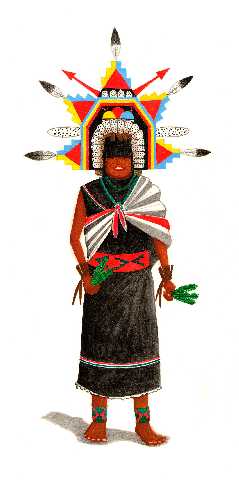
Many of the names are common in Hopi. And these lists doesn't begin to address Hopi words containing the letter L—e.g., polimana—or the Spanish and English names the Hopi have adopted and pronounced since their first contact with Euro-Americans. I sure hope the rest of your scholarship is better than this, because your claim about the letter L is without merit.
>> The Hokokams and the Anazasi were Hindus also. <<
If so, they were "Hindus" long before your AD 1200 timeframe, which blows a hole in your theory.
Same day, more debate
>> Robert, I don't know whether or not you're a Hopi. <<
I'm not. I'm a pure WASP.
>> But some of the top Hopi leaders have already given me their blessing. <<
Really. Since you're going to publish your work, supposedly, go ahead and name them. Quote them, if possible. I have some friends who may be able to verify your claims.
>> In fact, a meeting between Hopis and some Hindu authorities may soon be in the offing, just as I arranged a meeting between the Caddos and the Hindus. <<
Eight months have passed. Did the meeting happen? How did it go?
>> The people we call Spider Woman, Coyote Man, etc., were all humans at one time, just like you and me. <<
Since you can't prove that, I feel even more confident that you're making things up to justify your theories.
>> After hundreds of years out of India, the words wouldn't be exact anway -- but the spirit of the words is still surprisingly close. <<
Not based on what you've said. And I'm waiting for you to address my challenges about the different Hopi dialects. Prove to me you even understand what I'm talking about, for starters.
>> Another thing about me is that I stick mainly with religious words, place names, sexual words, planting seasons, and the like. <<
So when all the other words don't match, you don't have to deal with them? How convenient.
>> Therefore me, finding the correct approximation is little more than opening up the dictionary in the correct place. <<
Which dictionary? The Hopi have several dialects, and I believe they just produced the first dictionary of one dialect a couple years ago. Yet apparently you've developed your theories for years, maybe decades. Give me the title of the Hopi dictionary you allegedly used so I can verify it.
>> You're certainly correct about the Hohokam and the Anasazi being here a long time. The Hohos were sons of Noah. In Sanskrit: Hoho + Gana (The Hoho Tribe). <<
So the Hohokam were Semitic? Or were they Hindu? Another coincidence, another stretch in your theory.
I'm glad you're not even trying to bolster your weak position. Every hole I knock in it goes unrefuted, leaving your theories looking more and more like Swiss cheese. Soon there'll be no theory, only holes.
This may be the easiest debate I've ever won.
Rob
The debate continues (6/30/03)....
Gene,
>> Robert, I came upon your website by accident today and just wanted to answer you. I never even knew who or what Kokopelli was until a friend gave me a booklet to read about him. Before finishing that booklet, I knew for sure that it was discussing Kokopelli (really the personification of the Gemini Twins). About three months later, I wrote that article for Viewzone.
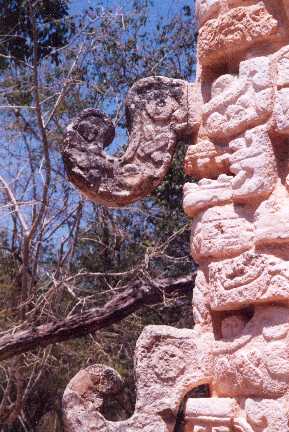
I am a graduate of a Mexican university even though I'm an American. I've also traveled the length and breadth of Meso-America. Kokopelli existed under similar or different names in every Amerindian culture Aztec, Mayan, Inca, etc. -- in fact the entire world! In ancient Mexico, he was called "Tezcatlipoca" and answers to the description of Kokopelli one hundred percent. The Hindu author Chaman Lal, who was exiled from India during the late 1930s and early 1940s, spent most of his exile in Mexico. Even he stated in his book, Hindu America, that Tezcatlipoca was Kubera. You can order this book from the Interlibary Loan System and read this for yourself. <<
If Kokopelli existed under "different names," I can't imagine how you'll prove it. But I guess that'll excuse you whenever your attempts to match names fail.
Unless you validate Lal's credentials, he's no expert on ancient Mesoamerican cultures. Or on the distantly related Pueblo cultures, including the Hopi.
>> In every country of Latin America, parents often scare their children who won't go to bed, or who won't be obedient, by telling them that old "Koko" or "Kukuey" may come and get them if they don't improve their behavior. My first wife, a Costa Rican, put the fear of God in my own children in this fashion. My wife of 26 years now, a Mexican, told me that all the kids in her native Jalisco were afraid of old "Kukuey" as well. <<
Then you should be able to cite many written sources for that point.
Why would Mexican Indians use the word "Koko" when you just said Tezcatlipoca was their version of Kokopelli?
Why would Mexican Indians scare children with "Koko" when Kokopelli isn't a scary figure? The Hopi don't consider him a demon or bogeyman or judge of bad behavior.
Maybe "Koko" is a Mayan word for "good night" and has nothing to do with Kokopelli.
>> Some Indians of Chalma, Mexico once told me that at night, they can hear Tezcatlipoca outside in the dark, playing on his flute.
The pre-conquest Tarascans worshiped Kubera as their principle God: Curi-Caveri. The "Curi" just derives from a Sanskrit word for "Kuti," meaning "Leader." <<
You mean you believe "Curi" derives from "Kuti." Undoubtedly you don't have any evidence of it.
I didn't know we had pre-conquest records for any Indian people except the major Mesoamerican civilizations (Aztecs, Maya, et al.). What's your source for what pre-conquest Tarascan Indians believed? Oh, I forget...you can't or won't provide sources.
When you have a shred of physical evidence that Hindu people migrated to the New World, I'm sure you'll provide it. Won't you? As we've seen, your name-and-legend matching skills are sadly lacking.
Quetzalcoatl = Kokopelli = Vishnu = Dionysius?
>> Quetzalcoatl represents only the trading half of the Kubera twinship: The Hindu Panch or Phoenicians. He is also the Hindu equivalent of Vishnu or Dyaus-Nahusha, known to us as Dionysius. About Yaya. Both "Ya" and "Yaya" are names of Shiva. Get a book about the thousand names of Shiva, and you'll see for yourself. <<
Kokopelli isn't a twin. Another of your assumptions is fatally flawed.
Why did you switch from Tezcatlipoca to Quetzalcoatl? Did you forget your own argument?
I hope you're not equating the word "Panch" with the word "Phoenician." You can't expect anyone to believe the hard P of "Panch" matches the soft Ph of "Phoenician" just because they both have P's in them. The P's "match" only when you transliterate both words from their original alphabets into English.
I didn't know Vishnu was the god of wine, like Dionysius. You learn something every day.
If Shiva has a thousand names, no wonder you can find a thousand coincidental matches.
Why would the Hopi have transformed Shiva, the Hindu god of destruction, into the so-called wind god Yaponche? Your theories continue to be comically slipshod.
>> The book, Truth of a Hopi, briefly describes political, social, and religious conditions exactly as they existed in Northern India, in about 1000 AD. <<
Does it? I don't recall that. I think you're imagining things. Tell me which pages so I can look it up.
>> People can call me names, be insulting, torture me, threaten to take my life, say I don't deserve my M.A. degree, or whatever. I'll never change my mind. Kokopelli IS Kubera! <<
So you admit you're a fanatic on the subject? That's about what I thought.
Fortunately, people will be able to read my deconstruction of your fanatical beliefs from now until doomsday.
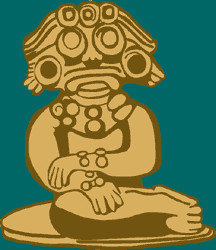


>> Enclosed in the attachment are pictures of Tezcatlipoca and the Tarascan Curi Cavira. <<
You mean Curi-Caveri, not Curi-Cavira. No wonder you find so many matches. You change the vowels whenever you need to.
The two figures look nothing like each other or like the classic pictures of Kokopelli. So what's your point?
>> By the way, when languages change, vowels are the first to take a beating. Consonants hang on like the Rock of Gibraltar, especially if they occur in religious terminologies. <<
Many of the consonants in your imaginative "matches" have taken a beating also.
>> Robert, you will remember in all our E-Mail conversations, I was courteous to you. <<
Yes, if you count evasiveness as part of courtesy.
>> I just want you to know that some incredible things have happened, that will make you look bad for being so smug. <<
I'm waiting. So far I look pretty good. You're the only one who looks bad, since you keep making empty promises about coming announcements.
>> A leading Hindu expert on symbols has come to my defense about this matter. <<
Wonderful. What's his name? Where has he published his work? When are you going to publish your work—in a peer-reviewed journal, that is?
>> Additionally, I have enlisted the full support of a half Hindu, half Seminole man in Florida. His father came here in the early 1900s and married a Seminole woman. His father was a Bengali Brahmin. He told me that not only his father, but he also has been yelling from the housetops that nearly all American Indians, even the Hopis, have North Indian origins. <<
What's his name? Where has he published his views?
Support from individuals who aren't any better versed in Hopi culture than you are is almost meaningless. Again, publish your work for the world's collective scientists and researchers to review. We'll see what they say.
>> At the same time, I am receiving the support of some leading Cherokees. A lot of people don't realize this, but the Cherokees ARE the Kokopellis. They themselves know it and have told me no less! <<
What are their names? Why don't you name any of these people? I'm amazed you don't see how this vagueness undercuts your already flimsy credibility.
"Cherokees ARE the Kokopellis"...whew. What does that mean: that the Cherokee have humpbacks and play flutes?
Another undocumented claim. More nonsense as far as I'm concerned.
>> Within the next few weeks, some incredible news will be coming out, that will really shake up our Amerindian nations. <<
It's been three months since you wrote. Where's the incredible news? I haven't seen or heard a word of it.
>> In the time that I have been preaching that the Amerindians have North Indian origins, a lot of people have been corresponding with me. Some agree; others don't. <<
To repeat, you haven't named a single expert who agrees with you. Every person I've consulted disagrees with you. Unlike you, I've even posted their names. They're willing to go on the record.
>> Only you and a professor from an Australian university have attacked me insultingly about this matter. I have told all the other people I have been corresponding with what is about to happen. <<
You've insulted my intelligence by making wild claims and then refusing to justify or explain them. If you can't defend your positions, you shouldn't make them public. Analyzing and criticizing half-baked theories is how the scientific process works.
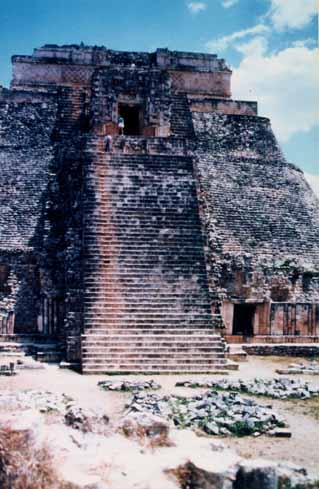
Big news in weeks...months...years?
>> However, out of all the others, I have decided that you should be the last to know -- when it is too late. I'm quite sure that within the next few weeks, you are going to wonder who does not deserve a Masters Degree. <<
No, I'm wondering where the big news is. Last time you said you'd have a big announcement in a few months, I believe. Now you've said you'd have one in a few weeks. Not surprisingly, nothing has happened.
In short, if you were "sure," you were surely mistaken. Oops.
>> Also, Robert, I was shocked that you would state in your website that this was an interview between you and me, meant for publication. <<
I don't think I stated anything like that. There's no mention of the word "interview" on this Kokopelli page.
>> I thought all the time that we were having a private E-Mail conversation. <<
You posted your theory on a public website. I posted my critique of it on a public website. Since it began as a public discussion of a public theory, I treated our e-mails as part of the dialog.
If you're embarrassed by your weak defense of your theory, come up with a better defense. I'll be glad to post it too.
>> At the same time, I was shocked that you would use the picture of Kiva city walls without contacting me. I myself got permission to use that picture from the photographer. This is a form of deceit. <<
I didn't know it wasn't your photograph. If you meant to keep the photo between us, you were foolish to send it without a warning. For all I knew, you wanted me to publicize it far and wide. I could've sent it to a million people over the Internet.
In reality, I used it for a not-for-profit scientific, literary, or educational critique of your theory. The fair-use exception to the copyright law exists for just that purpose. It's perfectly legal, I believe. But I'll take it down if you feel it's a problem.
>> This is a form of deceit. You should look first in the mirror at yourself before trying to make me correct my so-called "heresies." <<
Deceit how? I didn't promise I wouldn't use the photo. How did I "deceive" you...by assuming you sent me a photo that was yours? By assuming I was free to use it to illustrate your theories?
>> Now, this is all I have to say to you about this matter -- forever. <<
Promises, promises. I hope you defend your theories better when you present them to the public, or the public will laugh you off the stage.
>> I hope that within the next few weeks, your readers will have the same confidence in you that they do now. <<
I presume they do have the same confidence in me, since no news has appeared on the Hopi/Hindu front.
>> If they do, they should also throw their "masters' degrees" in the wastebasket. <<
Maybe you should get a master's degree for yourself rather than belittling those of us who have one (or two).
>> Robert, even when people disagree, courtesy and respect are the best policies. <<
I've given you as much courtesy and respect as I could muster. Problem is, you wanted me to take your theories seriously when you had no evidence to back them up. Sorry, your theories don't deserve respect because they're unsupported by facts and stereotypical to boot. They're an insult to the many Indians who believe their origins are rooted in the Americas.
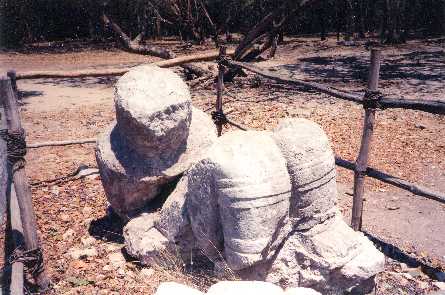
>> Your public statements will come to haunt you -- believe me -- and you'll lose your credibility altogether. <<
It hasn't happened yet. When do you think it might happen? Anytime soon?
Your bluffs are a sign of discourtesy, if you ask me. You've wasted my time with vague pronouncements that have no reality. Wasting people's time is an ugly thing to do.
Teaching Matlock about linguistics (3/17/04)
I suggest you learn something about how real linguists discern when two languages diverged. If you've applied this technique to Hindu and Hopi, it isn't obvious. While you berate my knowledge of linguistics, you've yet to mention any techniques used by actual linguists. Hint: Looking for random word matches isn't one of their techniques.
From the NY Times, 3/16/04:
A Biological Dig for the Roots of Language
Glottochronology was invented by the linguist Morris Swadesh in 1952. It is based on the compiling of a core list of 100 or 200 words that Swadesh believed were particularly resistant to change. Languages could then be compared on the basis of how many cognate words on a Swadesh list they shared in common.
Cognates are verbal cousins, like the Greek podos and the English foot, both descended from a common ancestor. The more cognates two languages share, the more recently they split apart. Swadesh and others then tried to quantify the method, deriving the date that two languages split from their percentage of shared cognates.
The method gave striking results, considering its simplicity, but not all of the findings were right. Glottochronology suffered from several problems. It assumed that languages changed at a constant rate, and it was vulnerable to unrecognized borrowings of words by one language from another, making them seem closer than they really were.
Because of these and other problems, many linguists have given up on glottochronology, showing more interest in an ingenious dating method known as linguistic paleontology.
The idea is to infer words for items in the material culture of an early language, and to correlate them with the appearance of such items in the archaeological record. Cognates for the word wheel exist in many branches of the Indo-European family tree, and linguists are confident that they can reconstruct the ancestral word in proto-Indo-European. It is, they say, "k'ek'los," the presumed forebear of words like "chakras," meaning wheel or circle in Sanskrit, "kuklos," meaning wheel or circle in Greek, as well as the English word "wheel."
The earliest wheels appear in the archaeological record around 5,500 years ago. So the proto-Indo-European language could not have started to split into its daughter tongues much before that date, some linguists argue. If the wheel was invented after the split, each language would have a different or borrowed word for it.
The dates on the earliest branches of Dr. Gray's tree are some 2,000 years earlier than the dates arrived at by linguistic paleontology.
"Since `wheel' is shared by Tocharian, Greek, Sanskrit and Germanic," said Bill Darden, an expert on Indo-European linguistic history at the University of Chicago, "and there is no evidence for wheels before the fourth millennium B.C., then having Tokharian split off 7,900 years ago and Balto-Slavic at 6,500 years ago are way out of line."
Dr. Gray, however, defends his dates, and points out a flaw in the wheel argument. What the daughter languages of proto-Indo-European inherited, he says, was not necessarily the word for wheel but the word "k'el," meaning "to rotate," from which each language may independently have derived its word for wheel. If so, the speakers of proto-Indo-European could have lived long before the invention of the wheel.
His tree, Dr. Gray said, was derived with the methods used by biologists to avoid problems identical to those in glottochronology. Genes, like languages, do not mutate at a constant rate. And organisms, particularly bacteria, often borrow genes rather than inheriting them from a common ancestor. Biologists have also learned that trees of any great complexity cannot be drawn up by subjective methods. Mathematical methods are required, like having a computer generate all possible trees — a number that quickly runs way beyond the trillions — and then deciding statistically which class of trees is more probable than the rest.
Dr. Gray based his tree on the Dyen list, a set of Indo-European words judged by linguists to be cognates, and he anchored the tree to 14 known historical dates for splits between Indo-European languages.
Many of the Dyen list cognates are marked uncertain, so Dr. Gray was able to test whether omission of the doubtful cognates made any difference (it did not). He also tested many other possible assumptions, but none of them produced an age for proto-Indo-European anywhere near the date of 6,000 years ago favored by linguists.
"This is why our results should be taken seriously by both linguists and anyone else interested in the origin of the Indo-European languages," he wrote, in a recent reply to his critics.
This is also why Matlock's "results" should not be taken seriously, in my humble opinion. He doesn't have linguistics, archaeology, or any other science behind his theories.
The debate winds down (5/7/04)....
>> Robert, I really shouldn't even be writing you. <<
Yes, since you promised not to several times.
>> However, I want you to know that I have already made contact with the Hopis of India. There are only 10,000 of them left on earth. <<
Let me know when you contact the Hopis of Arizona—especially the tribal experts who have researched the Hopi language and produced Hopi dictionaries. I assume you haven't talked to one of them yet.
>> They still call themselves by virtually the same name as the Hopis here: Hopiikwa, with only a tiny variation. <<
The Hopis' full name for themselves is Hopitu-Shinumu, which means "all people peaceful" or "little people of peace" (source: Pages from Hopi History). That isn't remotely like "Hopiikwa" except for the coincidental "Hopi" part. But you'd know this if you'd studied the Hopi and weren't just looking for matches at random.
>> Had you not been so insulting and humiliating, I would have shared this information with you as I have already done with some other people who have been more broad-minded with me. <<
I wouldn't have been so "insulting and humiliating" if you hadn't been so evasive and intellectually dishonest.
By the way, when's that big announcement about your findings coming? You know, the one that's going to rock the anthropological world and incontrovertibly prove me wrong? You promised it more than a year ago. Another bald-faced lie?
>> I just wanted you to know this. This is all. <<
Sure, until next time. <g>
Rob
Further comments
My impression is that author Matlock is sincere in his beliefs and thinks the pursuit of truth justifies his theorizing. The question is whether he's sincere enough to submit his beliefs to rigorous intellectual scrutiny—the kind that can rip half-baked theories to shreds.
Without such scrutiny, Matlock's theories are next to worthless. More important, they contribute to the stereotyping of Native people. They portray Southwest Indian culture as derivative, not original—implying the Indians weren't capable of developing their own cultural forms.
A reader weighs in (9/28/04):
Dear Robert,
I read your web argument with Gene Matlock on Kokopelli/Kubera issue. I keep running into this guy's theories on how everyone and everything came from India with little evidence. Him and the Graham Hancocks of the world ought to be tossed off the face of the earth. Thanks for draggin' him in the dirt!
If you ever hear from him again, use his kind of argument. Tell him in South Indian languages:
Gene means Jana = Man
Mat derives from Mathi = Sense and finally
Lock from Illaka = Less
Therefore Gene Matlock = Man without Sense!
Keep up the good work!
Aff'ly,
Sudha Rajendran
The real source of Hopi?
Another shocking revelation that raises doubts about what Matlock has claimed:
Don't believe everything you read here, either. The problems of transliterating two languages and then trying to match them apply here too. Ka in Hopi means life, not "father creator." Many of the figures mentioned are minor, not major. The figures not mentioned are more significant.
I've never heard of the Alo, Akush, Danik, Tapuat, or Tuawta. Some of the "matches" are far off: Danik = Dakan? Mokee = Kimah? Having the same sounds in a different order is a miss, not a hit.
Once again, it looks like someone found a few matches in two languages by coincidence, then formed a theory around them. Apparently Morningsky is another adherent of the Van Daniken school of inquiry.
Related links
New Age mystics, healers, and ceremonies
Readers respond
"I'm all with you and I'm sure I'm not the only one about this lunatic Matlock."
"I want to thank you for opening my eyes to individuals like Gene...."
|
. . . |

|
All material © copyright its original owners, except where noted.
Original text and pictures © copyright 2007 by Robert Schmidt.
Copyrighted material is posted under the Fair Use provision of the Copyright Act,
which allows copying for nonprofit educational uses including criticism and commentary.
Comments sent to the publisher become the property of Blue Corn Comics
and may be used in other postings without permission.